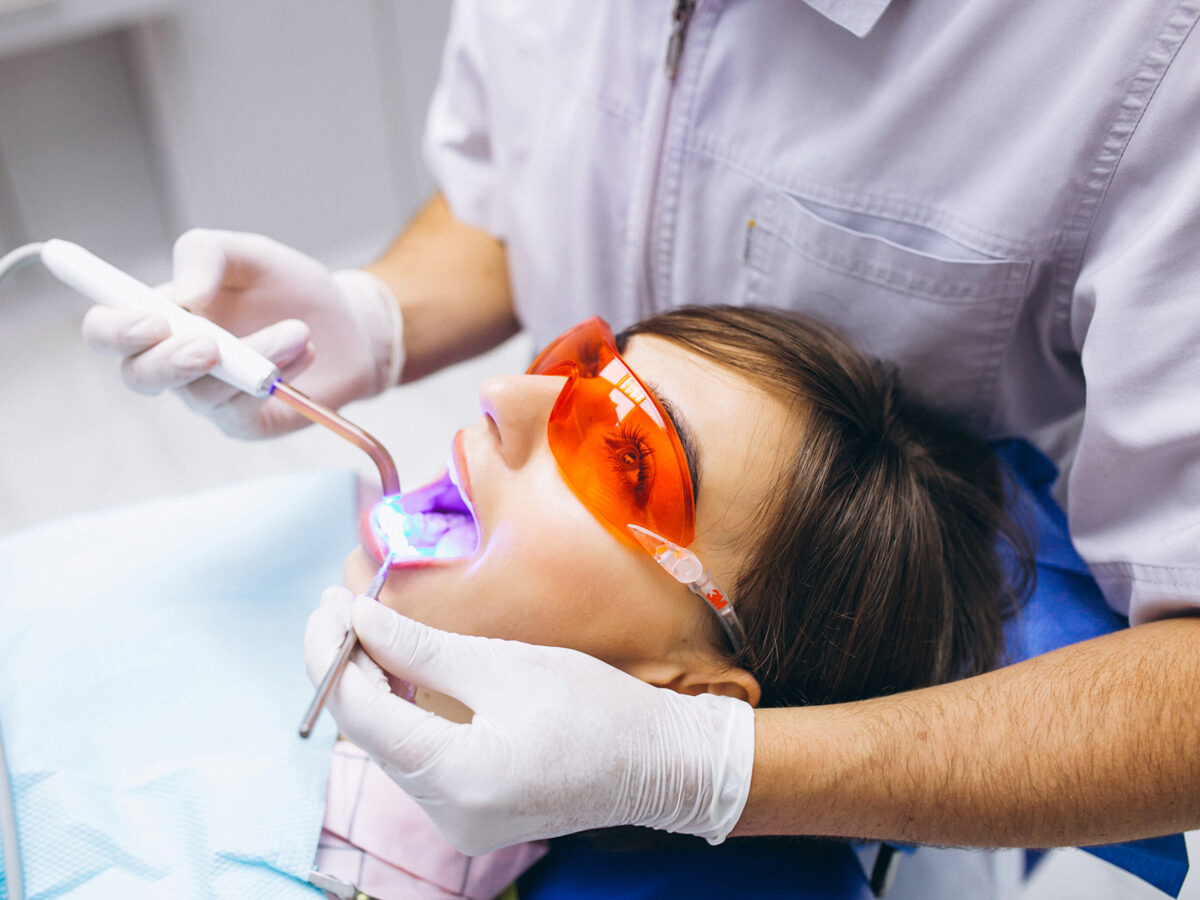Blog
Dental hygiene tips for healthy teeth & gums

What Happens During Professional Teeth Cleaning?
A teeth cleaning appointment typically lasts approximately an hour. Feeling a bit anxious about your upcoming dental cleaning? There’s no need to worry – rest assured, it will be a comfortable experience, and you’ll leave with all your plaque and tartar effectively removed.
Tartar and plaque are hardened residues in your mouth that you cannot remove without professional help. Brushing too hard can also hurt your gums if you try too hard.
Some Cleaning Processes You Will Go Through During Teeth Cleaning
- Oral examination
Your dentist will first examine the inside of your mouth and detect any issues and its cause. It can also involve a few X-rays for a more thorough checkup. If any periodontal disease or severe problem is present, the dentist might cancel the cleaning procedure for a while. This examination is necessary to avoid any complications or infections later.
- Plaque and tartar removal
The dental checkup and cleaning involve plaque and tartar removal. Your dentist will scrape and remove all the harsh residue hardened on the spot. The more tartar, the more time it will take to remove it.
Tartar is so hardened that you cannot remove it independently and requires professional help. It is always a better idea to avoid plaque formation in the first place by brushing and flossing more often.
- Teeth polishing
After all residual removal, your teeth will need a clean look; tooth polish will do just that. Don’t worry, since the process is not painful at all. This process will brighten up your smile and polish every inch of your teeth surface.
Your dentist might also use a toothpaste flavor of your choice for a better mouth feel. It is a must if you want your teeth to shine bright white after the teeth cleaning procedure.
- Floss
Home flossing is different from expert flossing during your dental checkup and cleaning. During teeth cleaning, it is necessary to clean between teeth. It can remove in-depth collected plaque and tartar residue between your teeth.
If you floss once daily, you might need an expert dental session for professional cleanup. But it’s better to ensure no tartar in your mouth. A clean mouth can prevent a lot of periodontal diseases.
- Rinsing
A gargle with water is a must after cleanup. After the procedure, your dentist might ask you to rinse your mouth with water. It will remove all the gunk scraped out by the dental hygienist. Rinsing your mouth will help you eliminate all the saliva collected during the teeth-cleaning process.
- Fluoride treatment
The final phase of your teeth cleaning regimen involves a fluoride treatment. This protective fluoride solution is designed to combat cavities for an extended period, typically several months. It is administered as a gel applied to a mouthpiece customized to fit your teeth, a quick and easy process lasting just one minute.
Then your dentist will paint fluoride varnish on your teeth for total coverage. It hardens when in contact with saliva so you can eat and drink soon after. This treatment is a must after the teeth cleaning process to ensure the safety of your teeth from cavities.
Final Thoughts
You must visit your dentist for a professional dental cleaning session twice yearly for better teeth and gums. With this cleaning process, you can protect your teeth from numerous diseases. A teeth-cleaning process can help you eradicate tartar and restore your smile’s shine.
A regular dental appointment is necessary to avoid upcoming issues and save you time and money. A healthy mouth needs regular brushing twice and flossing once every day. But professional help is something you can always rely upon. You can get a healthy mouth, clean teeth, and healthier gums with professional dental care.


